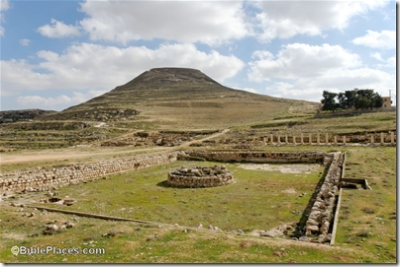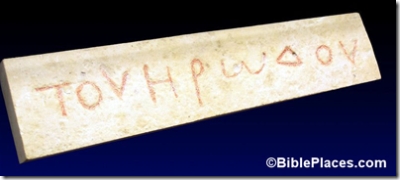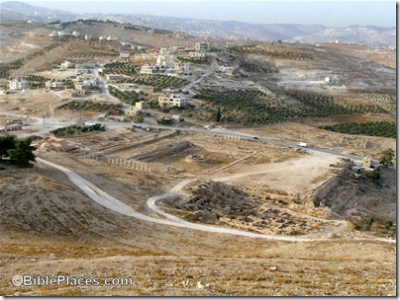Arutz-7 appears to be the first with a detailed report from the press conference. The Jerusalem Post and Haaretz are still reporting only the basics.
The approach to the burial site was via a monumental flight of stairs 6.5 meters wide, leading to the hillside; the stairs were especially constructed for the funeral procession. Herod died in Jericho, but left instructions to be buried in the area known as the Herodium.
The mausoleum itself was almost totally dismantled in ancient times, but part of its well-built podium remains. Spread among the ruins are pieces of a large, unique coffin, nearly 2.5 meters (over 8 feet) made of a Jerusalemite reddish limestone, decorated by rosettes. The sarcophagus (coffin) had a triangular cover, which was decorated on its sides. Only very few similar sarcophagi are known in the country, and can be found only in elaborate tombs such as the famous one at the King’s Tomb on Salah a-Din Street in eastern Jerusalem.
The tomb was found on the slope of the hill, and not in the complex that Herod had prepared for his burial. Some possibilities: 1) Herod ordered the location change in order to thwart tomb robbers (if so, he failed). 2) Herod’s subjects buried him here, defying the wishes of the king (as did Herod’s sister in ordering the leading men of the kingdom released before Herod’s order to kill them could be carried out). 3) Herod’s body was moved at a later time. 4) This isn’t Herod’s tomb.
On the last point, I would simply note that the basis for this “definite” identification is “a combination of the location, type of work at the tomb, the decorations, and pieces of the coffin.” In other words, there is no inscription. In order to make a convincing case, the workmanship of the tomb and coffin are going to have to be of the highest quality. It is interesting that “location” is factored into the identification, as it seems that the location, not in the prepared burial place, would argue against the identification. But of course, it is at the Herodium, and presumably, not just any wealthy citizen could be buried there.
I look forward to seeing photographs of the discoveries, and hope that soon the tomb area will be open to visitors.


